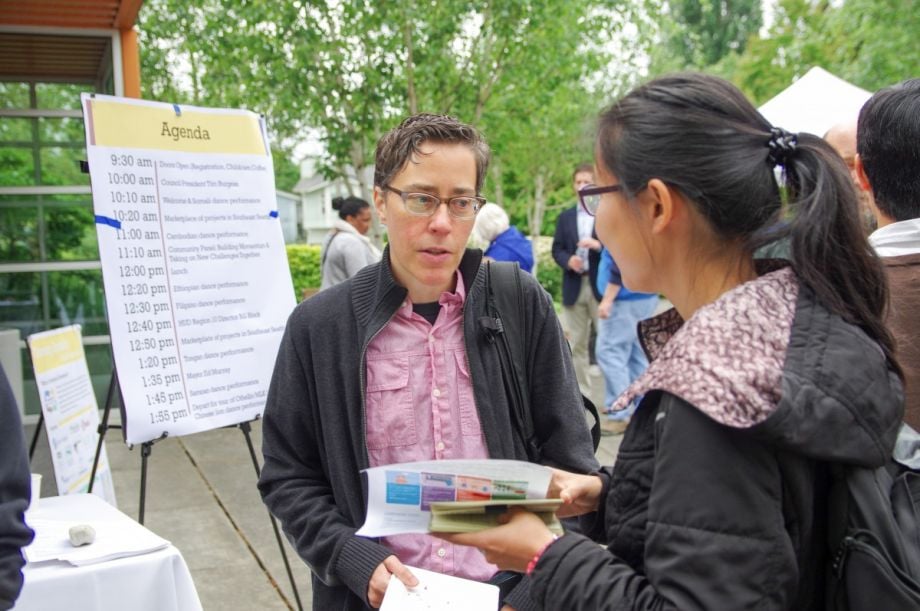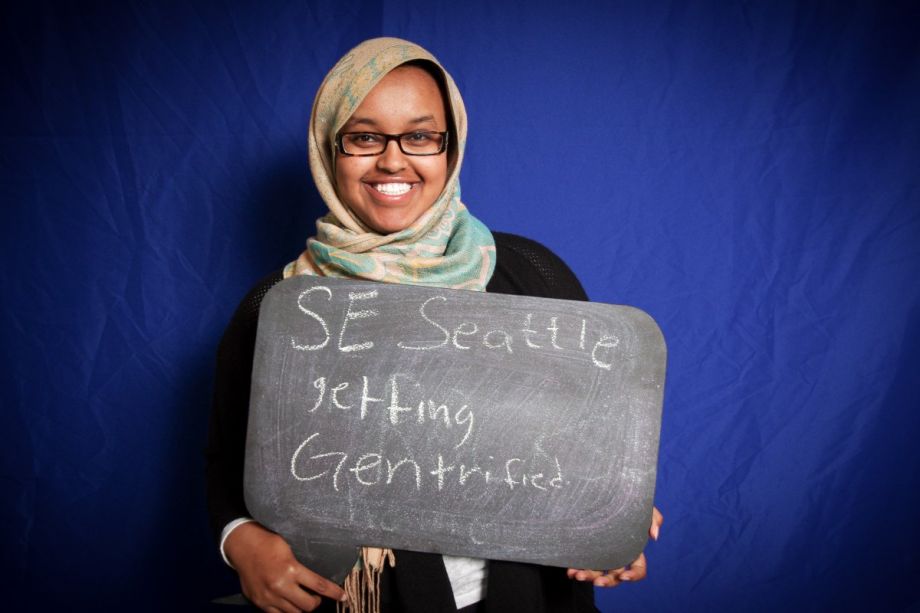“The federal government isn’t used to thinking in terms of places. It’s used to thinking in terms of programs,” says Christopher Forinash, of the Institute for Sustainable Communities.
But Washington, D.C., has warmed to the trend toward place-based investments. Forinash’s Institute this week published an evaluation of HUD’s Sustainable Communities Initiative (SCI), which is an example of that shifting approach. Kicked off in 2010, the grant program is one of the largest and most influential public showings of federal support toward holistic neighborhood and regional planning. Over the years, SCI has given $250 million to 143 communities, with grants ranging from $150,000 to $5 million. The report, “Better Plans for Better Places,” gives high marks to the SCI effort (Forinash’s organization is a grantee), and points to Seattle as one success story.
Seattle won two SCI grants: a community challenge grant for the City of Seattle to prevent residential, cultural and commercial displacement connected to the 2009 expansion of the city’s light-rail line, and a regional planning grant given to the Puget Sound Regional Council. Both thoroughly embedded equity in their plans and are models for deeply rooted engagement within highly diverse communities.
For the community challenge grant, HUD gave the city $3 million — and the city came up with an additional $5.9 million from public and private sources.
“The [Sustainable Communities Initiative] is an incredible confluence of our local context and the federal all coming together around race and social equity. That was really fortuitous in many ways,” says the Seattle Office of Housing’s Ryan Curren. He says former Mayor Greg Nickels’ 2005 Race and Social Justice Initiative provided the framework for creating their community challenge project, Community Cornerstones.
According to Curren, until the 2000s, neighborhood planning throughout Seattle tended to focus on the values of white homeowners and emphasize the aesthetics of neighborhoods, like sidewalks and parks. “In these newer plans, there has been a lot more emphasis on social capital, cultural stability, affordable housing and family-sized housing that really meet the needs of these communities,” Curren says.
The city’s Department of Neighborhoods subcontracted “Public Outreach and Engagement Liaisons,” or POELs, to engage with 1,500 residents through workshops, surveys and meetings to produce ideas for their neighborhood planning. The POELs were identified for their “tricultural” knowledge: They could speak the language of city government, understood the larger U.S. context, and were familiar with the specific cultural group they were engaging.
Three of the key goals that came out of that process were: new affordable family-sized housing near the new light-rail stations, support for the multicultural business districts in southeast Seattle, and support for cultural organizations through the creation of a shared, multicultural community center.
Throughout the planning process, the housing goals grew more and more ambitious. At the beginning, the idea was to produce 200 units of affordable housing; now Seattle’s on track to deliver 300. More than half of the units are family-sized with two or three bedrooms. And Curren says that the commercial corridor work was not just the creation of a typical business improvement district, but one “with an emphasis on immigrant and refugee business owners to [help them] provide culturally relevant goods and services that these communities really depend on.”
Community Cornerstones also eschewed a business-as-usual approach when forming the steering committee for the new multicultural community center. Instead of asking for volunteers and ending up with the usual roster of self-identified leaders, they surveyed residents, asking them, “Who do you depend on?” and “Who do you go to for resources or support?” In the end, the committee was made up of some executive directors of well-established community groups, but some people who were picked were unaware that they were so highly regarded or that so many people depended on their work.
Further, committee members weren’t given stipends for the time spent working on the center, but the city did use SCI grant money to award contracts to their neighborhood-based organizations. “They have the expertise … . All of them have assets in the form of social capital. All of them can turn out their community. We gave $18,000 contracts over a two-year period and additional consultant money, so they could hire consultants to do organizational development and feasibility studies for the actual cultural center,” explains Curren.
That sent a message that these groups are valued — and empowers local leaders and helps them build their capacity.
Forinash says that for some groups or municipalities, the extent of community engagement can be “an inch deep and a mile wide,” and that Seattle is one of the best examples of distributing HUD money to create community change in an effective way.
“They, and other grantees said, ‘We need to get this money in the hands of organizations in the communities who are already working in these places,‘” he says. “Or, ‘they might be working on perhaps one aspect of sustainability, like environmental justice, and this helps them grow to begin to engage in all of the issues related to sustainable communities.‘”
The Equity Factor is made possible with the support of the Surdna Foundation.

Alexis Stephens was Next City’s 2014-2015 equitable cities fellow. She’s written about housing, pop culture, global music subcultures, and more for publications like Shelterforce, Rolling Stone, SPIN, and MTV Iggy. She has a B.A. in urban studies from Barnard College and an M.S. in historic preservation from the University of Pennsylvania.



















